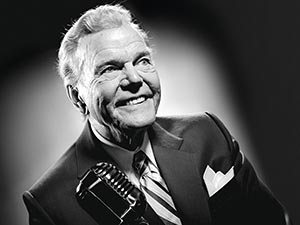
Steve Goldstein’s Amplifi Media works with media companies and podcasters in developing audio content strategies. Goldsteing writes frequently at Blogstein, the Amplifi blog.
One of the driving forces fueling the red-hot podcast advertising market is host-read endorsements. These spots, where a popular host plugs a product or service in the fabric of the episode, represent much of podcast revenue. And yet, while podcasters tout their ability to move product by speaking to loyal listeners, the art of audio personalities plugging products is actually as old as radio itself. Podcasters haven’t invented the live-read, but rather updated it for the iPhone generation.
For radio advertisers, live-reads have been highly effective. According to Nielsen, when a radio personality endorses a product, listener interest increased 44%. In today’s cluttered media environment, live ads are making a comeback on TV as well. To stand out and generate buzz, during the 2017 Super Bowl, both Snickers and Hyundai ran live commercials, a creative and technical feat. It’s a far cry from the first host-read ads on TV in 1939, when an NBC announcer voiced spots for Procter & Gamble and General Mills.
The First Radio Ad Aired Was For An Apartment Complex In New York
You can hear the impact of podcast live reads with a resurgence of talent endorsements on commercial radio stations. Ryan Seacrest, for instance, started endorsing products on his radio shows as part of multiplatform deals, and recruited big brands, like P&G’s Crest and Scope, to advertise on radio. It’s a long way from the first radio ad that aired in 1922 on WEAF, New York for Hawthorne Court Apartments, opening up a new way for marketers to communicate. While nearly a century has past, the art of speaking to consumers through audio has endured — and flourished.
Fast forward to 2019, and podcasts are the new hot audio format. Live reads are a natural extension of the intimate relationship between podcast hosts and listeners. Podcast hosts create communities of listeners and marketers want to monetize those relationships.
 Paul Harvey Had A Strict Set Of Rules For Endorsements
Paul Harvey Had A Strict Set Of Rules For Endorsements
Host-read ads may seem novel for a new generation of audio listeners, but, turning the clock all the way back, the format is time-tested and proven effective. Paul Harvey, whose show was once carried on 1,200 stations, had a strict set of rules for endorsements: brands had to sign up for a year of advertising, he or his family had to use the product, and Harvey bought stock in that company, in a demonstration of his own commitment. His formula, applied as consistently as the “Paul Harvey . . . Good day,” signoff, is a guiding light for podcasters looking to emulate his salesmanship – and land similar deals.
In a rare 2002 interview, Harvey explained his requirements: “I am fiercely loyal to those willing to put their money where my mouth is. I am very careful and selective taking sponsors that I can endorse with enthusiasm.”
One likely result of the rise of talent endorsements; too much of a good thing. By one estimate, there are nine mattress companies with “live” reads on podcasts.
Can a host claim to favor more than one brand of mattress, underwear or website? Will overuse of the tactic reduce its value?
We will have to stay tuned for the “rest of the story.”
Thanks to Westwood One’s Bruce Gilbert for the inspiration for this post.

 Paul Harvey Had A Strict Set Of Rules For Endorsements
Paul Harvey Had A Strict Set Of Rules For Endorsements